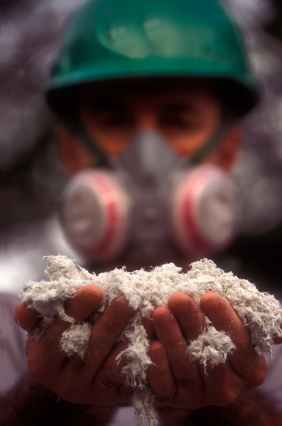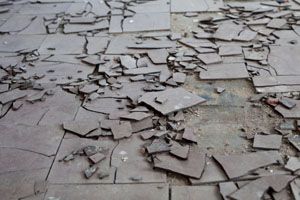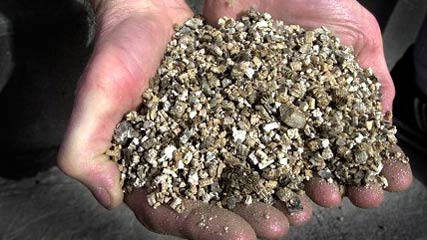What are asbestos and vermiculite?
Asbestos is a friable fibrous mineral related to magnesium silicates that is highly appreciated for its excellent insulating, fireproofing and refractory properties.
Learn moreOur solution
ASBESTOS CHARACTERISATION ANALYSES
Asbestos contamination of indoor air is mainly due to the presence of materials containing friable asbestos, for example sprayed or projected asbestos. These types of application were frequently used to insulate ceilings and walls up to the end of the 1970’s. Coated asbestos was also frequently used to insulate piping and when the materials deteriorate and become friable, asbestos fibers are released into the air.
offers two analyses that characterize and quantify the possible presence of asbestos in the environment (air and materials). The results are available within 24 to 48 hours and under specific conditions, the results can be provided the same day the samples are taken.
Characterization of asbestos using polarized light microscopy (plm)
This method is used to analyze materials in order to determine if asbestos is present. Invented in 1834 by W.E. Talbot, the first polarizing microscopes used a very thick glass mirror as the polarizer. At the end of the 19th century, these microscopes had assumed their present-day structure and polarization was done through a calcite prism. Today’s high-tech polarizing microscopes use Polaroid filters as the source of the polarized light and are equipped with cameras and monitors to make observation and analysis very comfortable and dependable. Polarization allows technicians to precisely identify the crystalline structure of isotropic and anisotropic minerals and thus to determine the presence of a specific mineral in any matter. This is still one of the most economical methods of analyzing and identifying the crystalline structure of minerals including asbestos.
Characterization of asbestos using phase contrast microscopy (pcm)
Developed in 1930 by Dutch physicist Frederik Zernike (who received the Nobel Prize in Physics for this research), this method is very often used in bacteriology but also in analyzing air when testing for the presence of asbestos dust and fibers. The samples are taken by vacuuming the air through special filters and then examined under a phase contrast microscope with which the differences in background light and that projected by the sample can be seen. In this way, the number of asbestos fibers can be determined, for chrysotile and amphibole asbestos, as well as any other mineral inclusions. This is the least expensive and most common method of air analysis used to determine whether asbestos is present.
Sample analysis:
- Bulk (PLM)
- Vermiculite (PLM)
- Soils (PLM/TEM)
- Nob material (TEM)
- Air (PCM/TEM)
What is asbestos?
Asbestos is a friable fibrous mineral related to magnesium silicates that is highly appreciated for its excellent insulating, fireproofing and refractory properties. There are several types of asbestos, including, among the most frequently used forms, chrysotile or « white » asbestos, and the amphibole class with its five varieties including crocidolite or « blue » asbestos and amosite, or « brown » asbestos. Russia, Kazakhstan, China, Canada and Brazil are the world’s largest producers of asbestos.
Although it has been most familiar to the public since the 19th century due to its industrial applications, asbestos has been used since prehistoric times. It has been found on archaeological sites in Finland, where the inhabitants of the late Bronze Age included it in caulking their shelters and making their pottery. Asbestos was also used in ancient Egypt, Persia and India for funeral preparations and weaving stronger cloth. The Greeks and Romans also incorporated asbestos into clothing for slaves, funeral shrouds, towels and other household linens, used it for building, and even included it in the manufacture of wicks for the Vestals’ eternal lamps. Charlemagne and Marco Polo marveled at asbestos cloth that could be cleaned simply by throwing it into the fire, and throughout the Middle Ages asbestos continued to be incorporated into the clay used for pottery.

The Industrial Revolution and the ensuing development and manufacture of heat-generating machinery intensified the need for asbestos. Since that period, asbestos has been an integral part of a large number of industrial applications from insulating fibers and sprays for heat- and fireproofing, filters and waterproofing, glues, felting and mastics, brake pads and cardboard, to binding agents and anti-caking products for paints, mortars and even cement. It is also used to insulate electrical installations, boilers and electric ovens. In some countries such as Canada, asbestos has been used to reinforce the asphalt used in highway construction (roads, service areas, etc.)
While its usefulness, its accessibility and its relatively low cost make asbestos very interesting for industrial use, this mineral is nevertheless highly toxic. The Greek philosopher and historian Strabo noted that the slaves and other people who wore asbestos clothing or came into frequent contact with asbestos developed respiratory diseases and died very young. The Roman historian Pliny the Elder also commented on the same phenomenon. In Great Britain, the first asbestos-related death was recorded in 1899. We know today that these pathologies are due to the inhalation of asbestos fibers, but it was only in the 1970’s that asbestos-related risks became a public health issue.

Long-term exposure to and inhalation of asbestos fibers lead to severe respiratory diseases. Pulmonary fibrosis (asbestosis), lung and pleural cancer, and cancers of the digestive tract are very frequent among people living and working in asbestos-contaminated environments. Other pathologies such as pleural lesions and thickening of the pleural wall appear within 15 years of the first exposure to asbestos and cause chest pain and respiratory difficulty. Cancers of the larynx or the gastro-intestinal tract can occur as well. Those most exposed are employees in asbestos mines, factory or construction workers when asbestos is present, asbestos removal technicians, those working for waste removal firms and any other person working on premises contaminated by asbestos. It is important to remember that anyone living or working in regular contact with asbestos fibers can develop one of these pathologies.

Since the 1980’s, many countries have implemented legislation forbidding the use of asbestos and requiring its removal from buildings. Yet this toxic mineral is still frequently found in old buildings and continues to be used in industrial production and the construction industry in countries like Japan, the United States and Canada as well as in major producing countries such as India, Vietnam, Pakistan and the Philippines. Though there has not been a great deal of study done on the subject, rain runoff nevertheless represents a risk wherever roads have been paved with asphalts containing asbestos. This leads to considerable pollution of the water tables and rivers as well as windborne transport of asbestos fibers during the dry seasons. Moreover, even in countries in which the use of asbestos has been forbidden, a certain number of derogations may exist, such as in France where the use of filters containing asbestos is still allowed in wine production. Finally, it is impossible to replace asbestos in every industrial application due to its unique qualities.
Vermiculite
A « safe » mineral that may be contaminated by asbestos
Vermiculite is an iron-aluminum-magnesium silicate that resembles mica. It is formed naturally by the hydrothermal alteration of certain basalts. When subjected to heat, it expands considerably and air pockets are formed. This transformation gives vermiculite properties that are heat-resistant, highly absorbent, compressible, non-reactive and with a considerable capacity for cation exchange. Vermiculite has been used since the 1940’s in industry, construction, horticulture and agriculture. The principal producing countries are China, South Africa, Zimbabwe and the United States.
Vermiculite’s characteristics make it extremely interesting for many uses in industry and construction : fireproofing and thermal insulation, soundproofing, refractory molding, aggregates for cement and plaster, hazardous waste disposal, and the production of safety packaging for hazardous materials. It is also highly appreciated for hydroponic gardening and as a carrier for biodegradability tests. Other uses include incubators for reptile eggs and insects.
Vermiculite manufacturers present this mineral as a substance that causes no particular health hazard. At present, national governments have not adopted regulations for the use of vermiculite other than the Material Safety Data Sheet, labeling, and safety precautions. However, vermiculite can also contain mica, quartz, feldspar and other minerals that can cause eye or lung irritation if the dust is inhaled. Users must therefore take precautions when handling vermiculite (mask and safety glasses) and make sure to read and understand the MSDS.
Vermiculite can also be contaminated by amphibolic asbestos. This was the case for the vermiculite mined in Libby, Montana, the largest mine in the world from the 1920’s to it’s shutdown in the 1990’s. If the vermiculite contains asbestos, the health risk is high and handling the contaminated vermiculite exposes the person to the same pathologies as those exposed to asbestos. It is therefore necessary to perform analyses when vermiculite is present or when its use is being considered.
Sources :
Les risques à la santé associés à la présence de moisissures
inspection du bâtiment et analyse de l’air intérieur
Les risques à la santé associés à la présence de moisissures